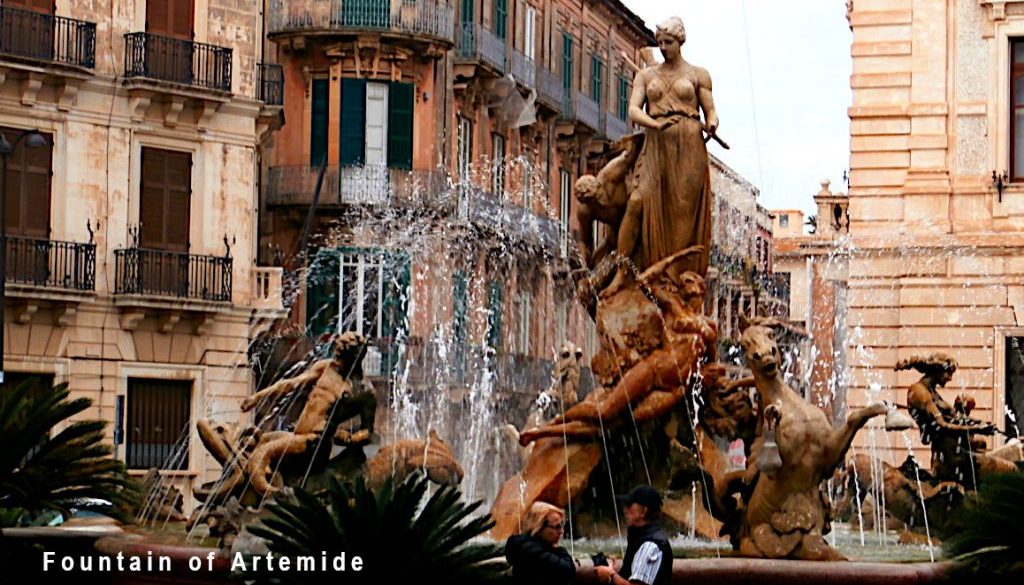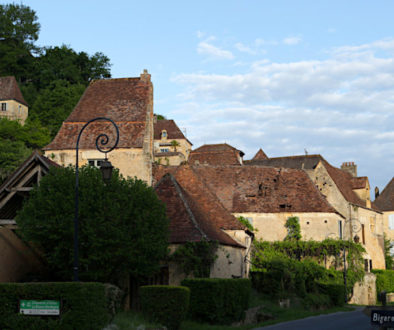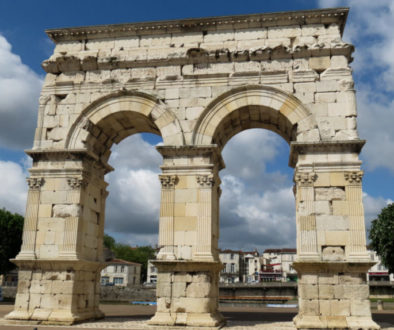SYRACUSE – QUEEN OF SICILY
7th November:
SYRACUSE – CITY OF LIVING HISTORY
The next day we visited Syracuse – city of living history. Principally because we love history, Central Syracuse impressed us the most of the whole island of Sicily.
In truth – Syracuse (or ‘Siracusa’ as the Italians call it – and it is THEIR city) is a place so full of beauty, history and charm that we know we only touched the surface. If we are ever able to return to Sicilia we will make Siracusa our base.
SYRACUSE – FIRST THINGS FIRST – WE PARK IN THE BUSY HARBOUR
As I remember, it took a long time to traverse the road from the highway that led down to Syracuse. Like most early settlements, it was built by the sea.
Following the signs to ‘Harbour Car Park’ we saw, as we got close, the spars of yachts and other boats, large and small. Then we entered a wide, clean street lined by smart hotels. We emerged by the most impressive: a quietly grand, pinky-terra-cotta building of some age. It took up the entire corner at the end of the horseshoe-shaped enclosed harbour.
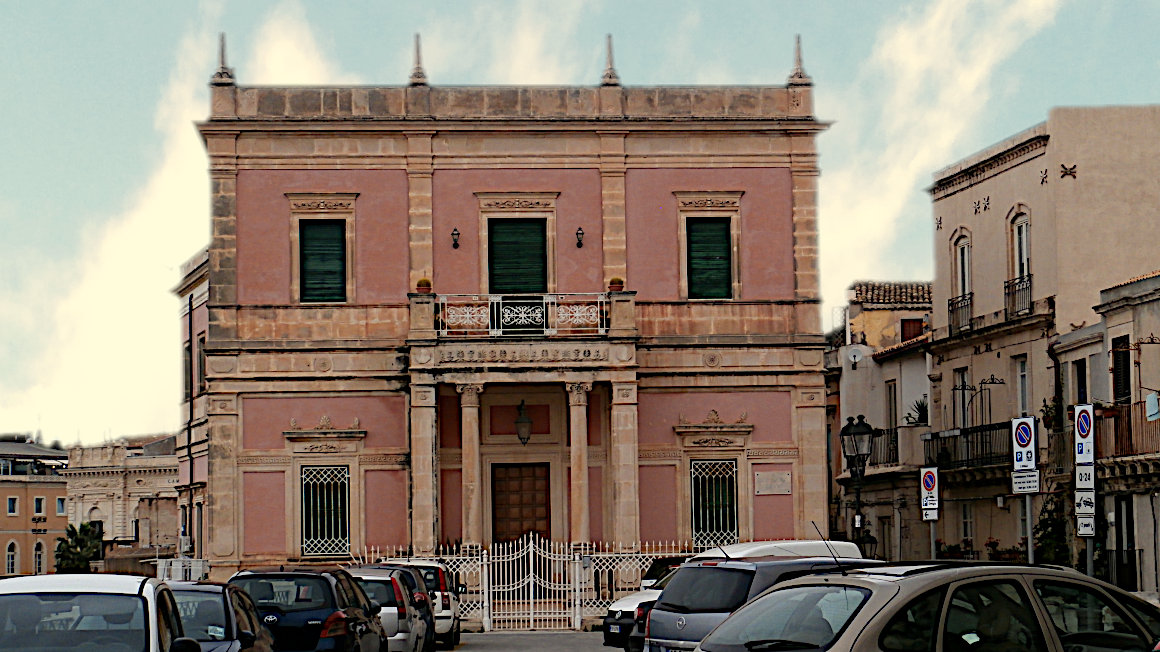
Even more imposing was the ‘palazzo’ we could see beyond the large bridge spanning the river that disgorged into the sea.
We parked, and strode into the small piazza where they sold tickets for boat trips. But we were both thirsty, and there was a tempting little bar facing the sea.
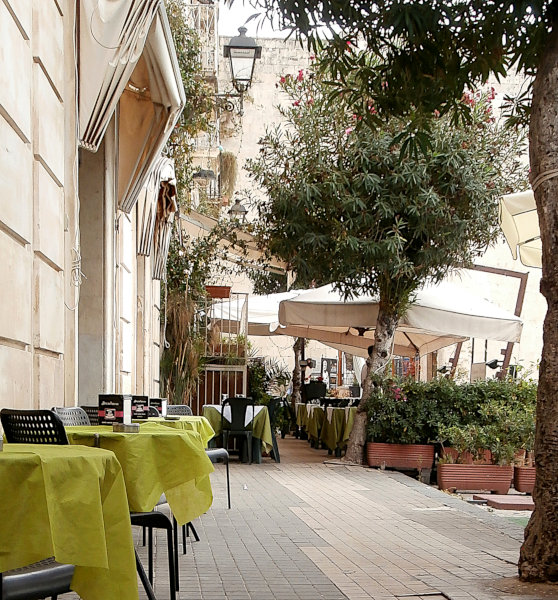
SYRACUSE HARBOUR – AN EXCELLENT LITTLE BAR
A pretty, friendly girl served us with Peronis, while I admired the covered snacks that lined a long, covered ‘cooler’ counter. It was too early for lunch. Later, when we stopped at a place that gave us the ‘end of season’ treatment, I bitterly regretted that we had not gone back to that bar – but we did not wish to retrace our steps so early.
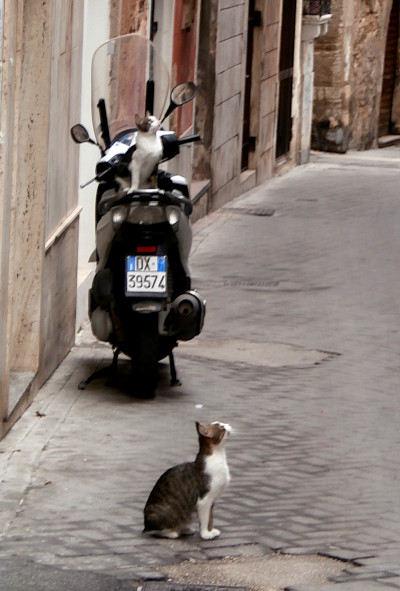
SYRACUSE – WE CLIMB NARROW OLD STREETS
There was quite a trek up narrow, winding streets of elegant, tall houses. I would guess them to be late eighteenth century – like our Georgian era. Cats hogged every patch of sun until frightened off by motorbikes. These roared down (and up) at fairly regular intervals, somehow dodging around us in the confined space. Then the cats would reclaim their patch of sun. Italian love of cats may be because they keep rats and mice at bay in these warm old towns.
Every so often we would find ourselves in a small piazza, generally with a fountain in the centre. Some of these had stately and elaborate stone carvings as a base.
SYRACUSE – THE BEST THINGS ARE ALWAYS AT THE TOP
Emerging from the deep shadows of a narrow street we were lured by the airs of Vivaldi being expertly played on a guitar. As soon as our eyes adjusted to the brilliant sunlight, we found ourselves in a very large and elegant piazza. Graham was enchanted by the expertise of the romantic-looking, curly-haired young man who sat outside the cathedral, absorbed in his music. He was very talented indeed. After taking several photographs, and engaging in conversation, Graham asked permission to make a small video. After buying a CG, and exchanging email addresses (sadly mislaid since), Graham left a generous tip and we resumed exploring.
SYRACUSE DUOMO – UNIQUE IN BEAUTY AND HISTORY
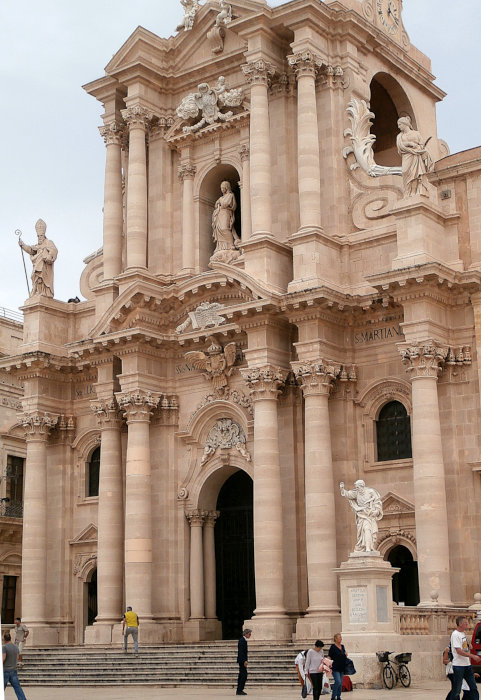
We especially admired the Duomo (Cathedral). It had a very clean, elaborate, baroque frontage – all rosy-white. But the gasp factor came when we went inside and found ourselves in a vast, mainly empty space with pitted columns of enormous girth. We had to look right up to see the tops – so high was the ceiling. To our right, beyond the nave, we could discern many chapels hidden behind them.
A DAGGER IN HER THROAT.
One of the inner chapels was dedicated to St Lucia– one of the three patron saints of the city. There she stood, richly dressed in real clothes, with a large, fearsome dagger stuck in her neck. She gets regularly paraded like this throughout the city.
AN EARLY CONVERSION.
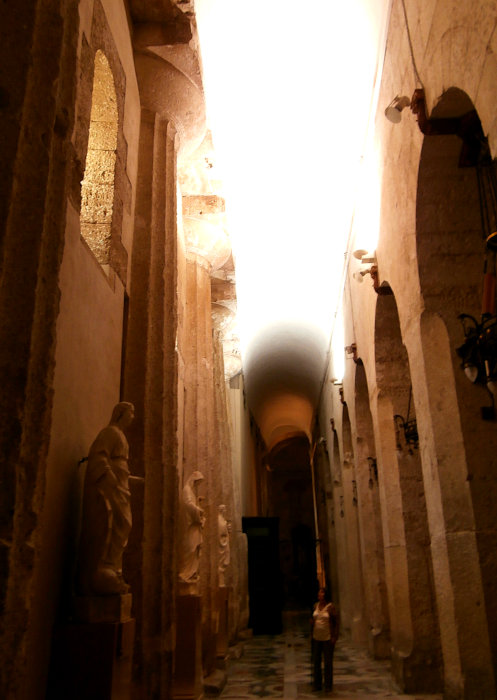
We learned that the whole building is an early conversion, using parts of an ancient Greek temple to Athena. Indeed, on one side of the exterior you can see where the walls have been contrived. They were built in-between the ancient columns, still standing strong in their entirety.
SYRACUSE’S ANCIENT TREASURES – HIDDEN BENEATH THE BAROQUE.
We had to pay a small sum to enter. It was explained that our tickets also included the remains (next door, and below the level of the cathedral crypt) of a much older, (5000 year-old) temple to Artemis. She was the daughter of Zeus (chief god) and Leto. Artemis was Goddess of Hunting, like the Roman Diana. We also saw the few remains, below the Duomo, of the 5th-century BC great Greek Temple of Athena aforementioned, which had been ransacked to build the present cethedral above it.
Archeological site excavations by Paolo Orsi in 1907-1910 show that Greek temple to have been built on even older foundations. They uncovered a wealth of archaic and pre-Hellenic artefacts. Many are held by the Museo archeologico regionale Paolo Orsi in Syracuse.
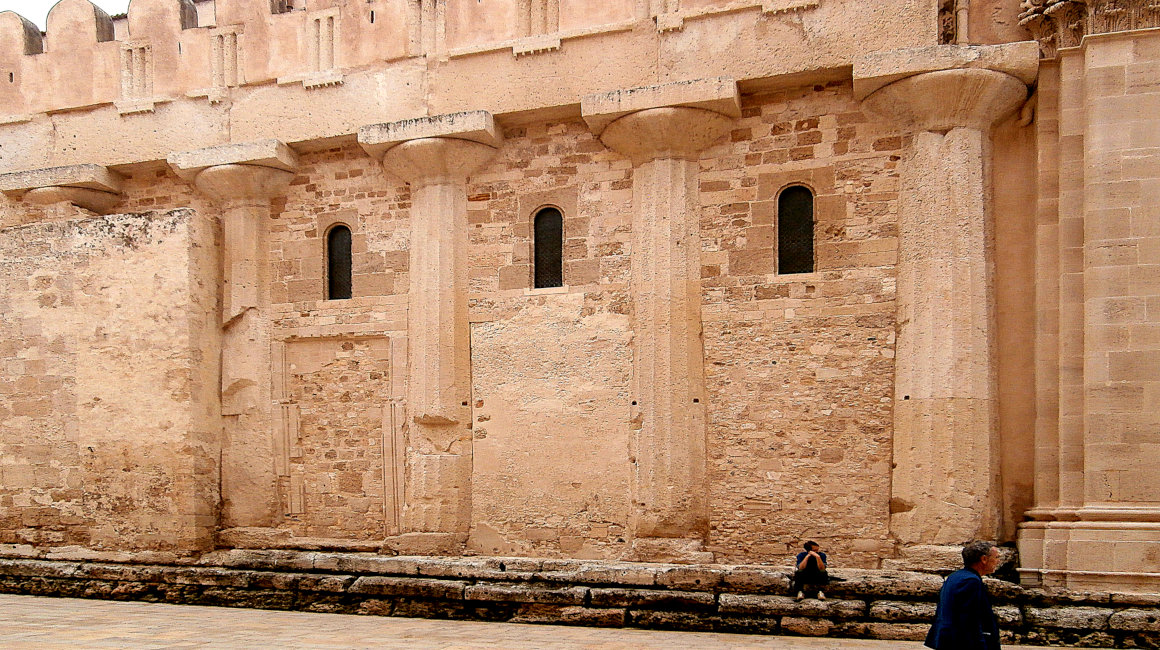
THE PLINTHS FOR THE SHATTERED COLUMNS STOOD HIGHER THAN ME
We had to approach the ruins of the older temple (to Artemis) through a rather scruffy, neglected garden. Some shallow steps led down until we finally stood at the bottom, on a wooden walkway. A marvel met our eyes: We appeared to be about three feet above the uneven floor level of an enormous chamber. The sheet of explanations stated that most of the pillars had been broken up or transported to build the temple to Athena that was the basis of the Duomo next door. Even so, I got down and stood on the base of one of the plinths upon which the original pillars were erected, and the square block of stone reached to above my head.
5,000-YEAR-OLD SPECIAL SEATS REVIVE OLD MEMORIES
As we progressed along the walkway more marvels emerged. Namely. a glass-covered relief model of the original layout, and then an intact row of stone latrines. They reminded me of the old ‘karsies at the bottom of the garden’ that I had to use each time I was evacuated to the country as a child. (I wondered if those very, very Ancient Greeks had the equivalent of little squares of newsprint strung on gut dangling down beside them…) These were grander, as they had armrests carved between each hole. I had a vision of Greek worthies sitting solemnly reading their scrolls like Mr Bridger in ‘The Italian Job’.
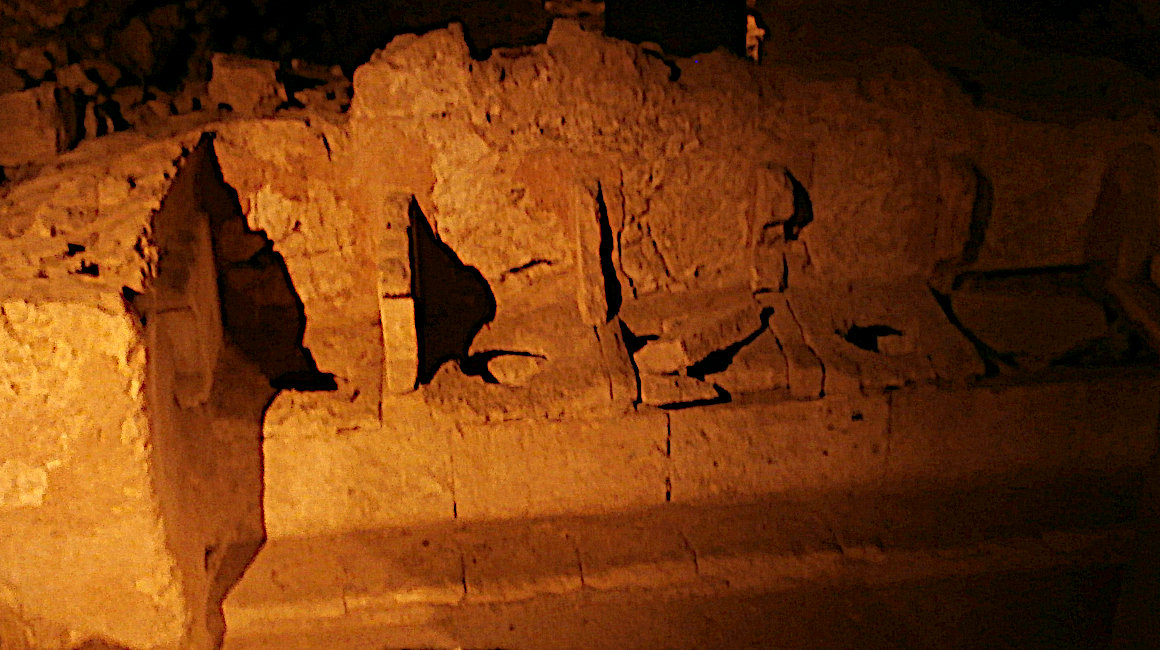
WE DISCOVER THE BACK HARBOUR (ORTIGIA ISLAND)
By that time we were quite thirsty, but we took that stroll round the back of the headland, and found a completely different harbour from the one we had first encountered. There was a feeling of it being much as it would have been in the Renaissance, with sailing ships pulling up to disgorge cargo into the smaller warehouses that lined the long sweep of the quay.

HUNDREDS OF PHOTOS – SPECIAL MEMORIES
Graham has many, many photos of this wonderful ancient city. Its old side streets captivated him, as well as the grand squares with their fountains. Below is a taster of the many ‘quiet corners’ where people live their lives, relatively undisturbed by tourists.
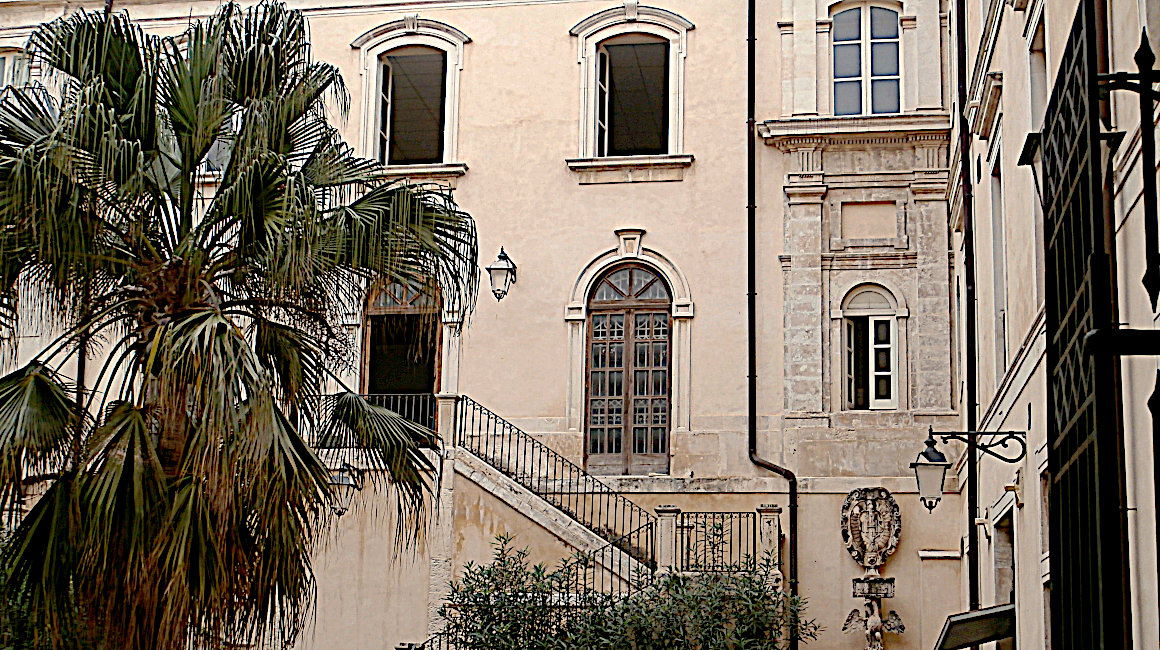
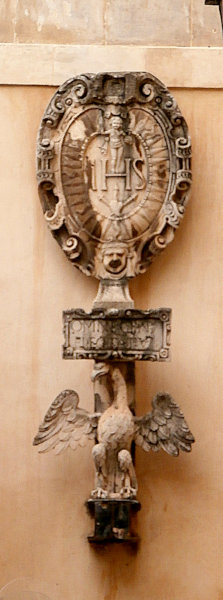
HIDDEN FROM TOURIST EYES
While in that area we explored some other, lesser-known towns inland, and closer to Mount Etna. Most of these betrayed the very real poverty Sicily is still suffering. We got curious stares as we entered one town where we had to turn around because the road leading out from the main square and down the mountain had completely collapsed, right in front of a house! We felt great empathy for these struggling people, and could not help wondering why more of the riches culled from tourists like us could not be shared to improve the lot of these inner, less-penetrated towns and villages.
Text by – Jackie Usher, SWWJ. (aka author Debbie Darkin, & ‘Graham Liverpool’ on Trip Advisor.)
Photographs by – Graham Usher.
![]()

